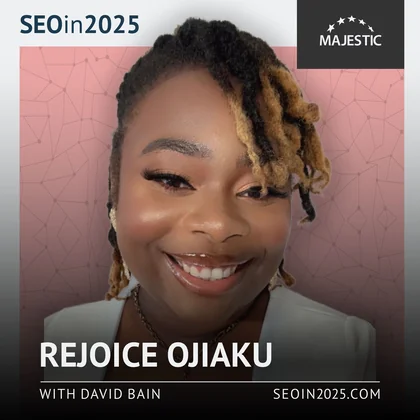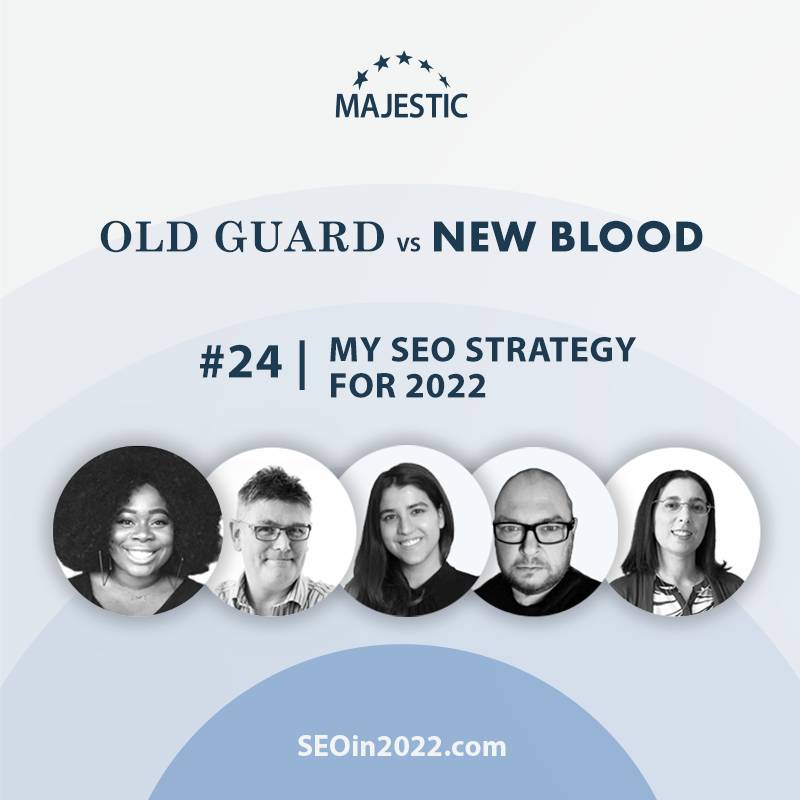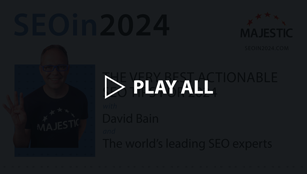-
Site Explorer
- Majestic
- Summary
- Ref Domains
- Backlinks
 New
New Lost
Lost- Context
- Anchor Text
- Pages
- Topics
- Link Graph
- Related Sites
- Advanced Tools
- Author ExplorerBeta
- Summary
- Similar Profiles
- Profile Backlinks
- Attributions
- Compare
-
Link Tools
- My Majestic
- Recent Activity
- Reports
- Campaigns
- Verified Domains
- OpenApps
- API Keys
- Keywords
- Keyword Generator
- Keyword Checker
- Search Explorer
- Link Tools
- Bulk Backlinks
- Neighbourhood Checker
- Submit URLs
- Experimental
- Index Merger
- Link Profile Fight
- Mutual Links
- Solo Links
- PDF Report
- Typo Domain
- Free SEO Tools
- Support
Identify the archetype of your brand
Rejoice Ojiaku
In a world increasingly overpopulated with labels, Rejoice Ojiaku from Nelson Bostock UNLIMITED suggests brand archetypes as a way to make your identity cohesive and compelling to the customers that matter.

Identify the archetype of your brand
Rejoice says: “Start incorporating and integrating brand archetypes into your content strategy to align your content and identify buyer personas.”
What is a brand archetype?
“Brand archetypes are a set of 12 frameworks. It is a more psychological approach to developing emotional connections with your audience through your brand. A lot of brands inherit these different distinct personas that can represent a brand identity and create a narrative within your audience about what the brand is.
There are 12 brand archetypes that have been developed in total. Each of them speaks to the identity, vision, and values that a brand may have. You can use that in your strategy and brand messaging, and each one has individual traits associated with them.
These archetypes include things like the Innocent, the Everyman, the Hero, and the Rebel. Different brands tend to be represented by different archetypes. For example, Coca-Cola is associated with the Innocent, eBay the Everyman, Nike the Hero, etc.
A brand that falls under the Innocent archetype is a brand that seeks happiness, safety, and simplicity. They avoid corruption and aim to foster positive feelings and trust. Coca-Cola is known for its messaging around happiness and nostalgia. They are famous for their ‘Open Happiness’ campaigns, so they fall nicely into that archetype.”
Instead of creating different buyer personas are you almost creating a persona for your brand instead?
“Once you personify the brand, it will help you figure out your ideal customer. If you give your brand the archetype of the Creator, creators are innovators and non-conformists, and they have their own ideas around creativity and design. Within that archetype, there are brand traits such as originality, expression, and vision, and they tend to use creativity to solve problems. These are brands like Apple.
By giving that brand its own personification, you’re able to identify the ideal customer who would have an emotional connection to that brand. You can almost view it as working backwards. You start with personifying the brand and then you find the ideal buyer persona because then it will be a lot more aligned.”
How do you know what your brand’s personality is?
“You can figure it out in terms of your values and the mission. What perception would you like to give off? What would you like people to identify with your brand? You have to understand the perception you want people to have, the narrative, and the messaging. Then you can figure out where you sit.
By going through all the different brand archetypes, you will be able to identify which category you fit into the most. The framework has already been created, so it is very easy to identify where you belong. You can also look through the industry that your brand falls in and identify it in that way.
From a personal brand perspective, my personal brand fits into the Caregiver archetype, which is characterised by helping others, compassion, care, etc. I’ve identified that as my personal brand, so I can then figure out what audience I resonate with the most. Using that framework, it’s easier to tick off those criteria.”
It’s a concept that was conceptualised a long time ago, so is it still really relevant to today’s consumer?
“It’s relevant because it’s a good way to leverage and enhance your content strategy. It’s great for marketers to look at it when you’re creating your content and thinking about the audience who would resonate with that. You can use this framework to form strong emotional connections with your audience.
In the years to come, consumers will want brands that resonate with them emotionally and not just on a functional level. Nowadays, people are looking for relatable brands to connect with. By using these archetypes, you’re able to ensure that your brand messaging consistently appeals to your ideal consumer.
This strategy is important for all businesses of all sizes, especially those that are very intentional in wanting to build lasting relationships with consumers. Startups looking to define their voice or established brands trying to refine their positioning can use this approach to ensure that you’re consistently putting out that message across all of your content channels.”
How do you go about consistently incorporating your selected archetype into your content?
“There are a few steps that you can take. In the beginning, you have to identify your brand archetype. Analyse your brand’s mission, values, and voice to help you determine which archetype best aligns with your business. That can involve looking through customer feedback, brand workshops, and even competitor analysis.
From that, move into refining your buyer persona. You want to map out your archetype to your target audience’s desires and values. For example, if your brand falls within the Hero archetype, you can align your buyer persona with those who seek empowerment and inspiration. It makes it easier to refine your buyer persona in that way.
Then, move on to aligning your content strategy. You want to create content that speaks to the emotional triggers of your audience, which are associated with your brand archetype. If you’re a Caregiver, you want to focus on nurturing helpful content such as creating how-to guides with empathetic messaging behind them.
The next step is to include the SEO elements and optimize that content for your SEO. Use keywords that align with the archetypical messaging and ensure that those include terms with high search intent terms. You want to ensure that your content is optimized for search engines. If you are a Caregiver creating how-to guides, use keyword research to find search terms that are more informational. That’s how you can align those.
Lastly, you want to distribute that across the channel. Be consistent with it. Ensure that your archetypical voice is consistent on all platforms – from social media to blog posts and even your email campaign. Having that consistency will help reinforce your brand identity and build trust with your audience over time.”
How do you find the emotional triggers for your audience?
“Emotional triggers are the traits that are linked to your brand archetype.
For example, with the Ruler archetype, some of the concepts surrounding those emotional triggers are power, status, success, and wealth. You have brands like Microsoft and Rolls-Royce that really speak to those emotional elements. They target people who are seeking loyalty and status. The whole point of the Ruler archetype is success.
Those are the emotional elements. You want to break it down into the words that are linked to that archetype. The research has been done for you, so it is easy to find that. Even by looking at the brands that are already classified within an archetype, you can see whether your brand resonates with them or not, and then move through in that way.
The emotional triggers are very easy to identify. Think about what feeling or emotion you want to evoke in your consumers and see how that fits into the archetype.”
Can you just decide upon your brand archetype once and build a content strategy based on that, or do you have to revisit it and hone it all the time?
“Your brand archetype should remain consistent, unless you are doing a complete brand revamp and moving away from what you originally wanted your consumers to feel when they thought about your brand. The archetype itself can, and should, stay the same. Once you have that, the content can be revamped over time.
If you are situating yourself within the Everyman archetype, which is known to be the regular guy, the desire for that archetype is to build connections with others. It has traits such as being realistic, inclusivity, and equality. If you’re creating content that evokes those emotions in your audience, the content itself can be changed in terms of how you want to make it resonate and the format you want to use to evoke that.
However, the archetype for your brand should be consistent. It has to be something that lasts, unless you want to completely change your branding. The archetype is not something that should be revamped every month. The content and the content format should be updated to ensure that it’s consistent and matches the archetype at every point.
If you’re trying to create deep connections with people and you fall under the Everyman archetype, your content should be doing that continuously, but you can do that in different ways. It doesn’t have to be the same format each time, but the messaging and the emotional trigger that you want to speak to should remain the same.”
Does developing deep connections with people have a measurable impact on user experience and SEO success?
“Success can be measured through a combination of SEO metrics and engagement. Regardless of the archetype that you have, there are base measures of success that you can use.
If you look at SEO performance, you can track changes in your organic traffic based on the keywords that you’ve used – looking at keyword rankings, page views, and the high engagement driven by that emotional connection. If you feel that you’re creating content that is connecting with people, you can track it to see if that content has moved over time. Are you getting more traffic to it? Is that traffic leading to the landing page you want to link back to?
You can even look at that content from an audience engagement perspective. You can measure metrics such as time on page, bounce rate, social shares, and even comments to help assess how well your content is resonating with your audience.
Most importantly, the whole point of creating content is for some degree of conversion, so you should look at a conversion metric as well. Using the content that aligns with your archetype, you want to be able to track the conversions – whether you want people to sign up, purchase something, download something, or interact in some way. Those emotionally engaged customers are more likely to convert because you’re speaking to their emotional triggers.
Lastly, you have brand awareness and sentiment metrics. Monitoring brand mentions, reviews (if you are a service or product-based brand), and sentiment analysis will help you gauge whether your archetype is impacting public perception. Look at what people are saying about your brand. Do you see an alignment between what your consumers are saying and the archetype that you have identified for yourself?”
If an SEO is struggling for time, what should they stop doing right now so they can spend more time doing what you suggest in 2025?
“SEOs often focus too much on the surface-level task. That’s not to say they are not important – they absolutely are – but we sometimes focus on tasks that are not directly contributing to long-term brand growth.
If you start to see SEO not just as tasks that you need to do, but as a way to develop and grow a brand, then you won’t keep endlessly tweaking metadata descriptions. Of course, tweak them, but it doesn’t have to be so frequent, and you don’t have to over-optimize for a few keywords.
Instead, focus on building a strong emotionally resonant brand narrative that ties into the archetype. That can be done by focusing on the type of content and the emotional triggers you are trying to evoke from it. Content that resonates emotionally will lead to better long-term results.
Through that, you will naturally gain traction in search engines and increase engagement. If you focus on the larger picture within SEO, and you’re not too bogged down in the nitty-gritty surface-level work, you will be able to move the needle a lot further.”
Rejoice Ojiaku who is SEO manager at Nelson Bostock UNLIMITED, and you can find her over at NelsonBostock.com.
Also with Rejoice Ojiaku
Choose Your Own Learning Style
 Video
Video
If you like to get up-close with your favourite SEO experts, these one-to-one interviews might just be for you.
Watch all of our episodes, FREE, on our dedicated SEO in 2025 playlist.
 Podcast
Podcast
Maybe you are more of a listener than a watcher, or prefer to learn while you commute.
SEO in 2025 is available now via all the usual podcast platforms
Don't miss out
Opt-in to receive email updates.
It's the fastest way to find out more about SEO in 2025.
Could we improve this page for you? Please tell us







